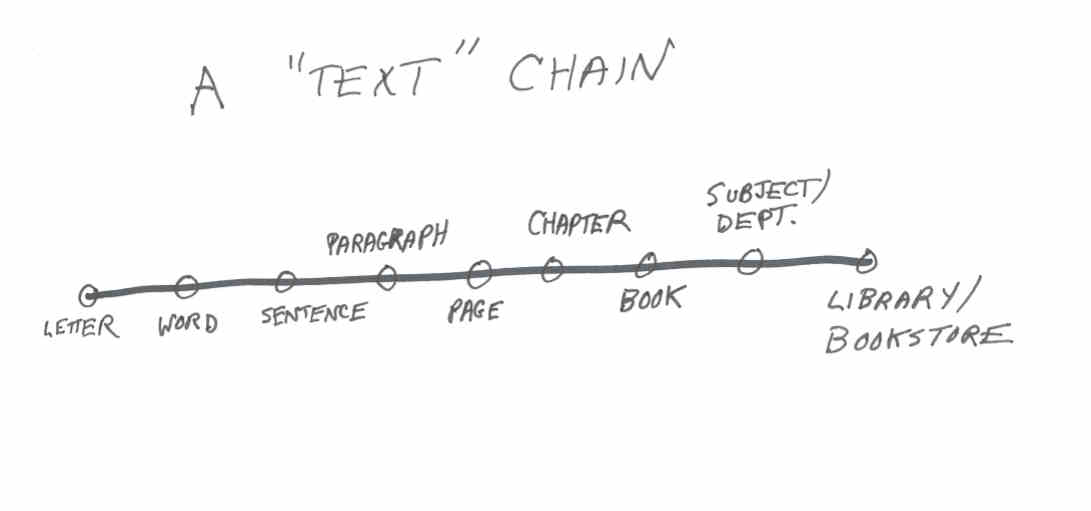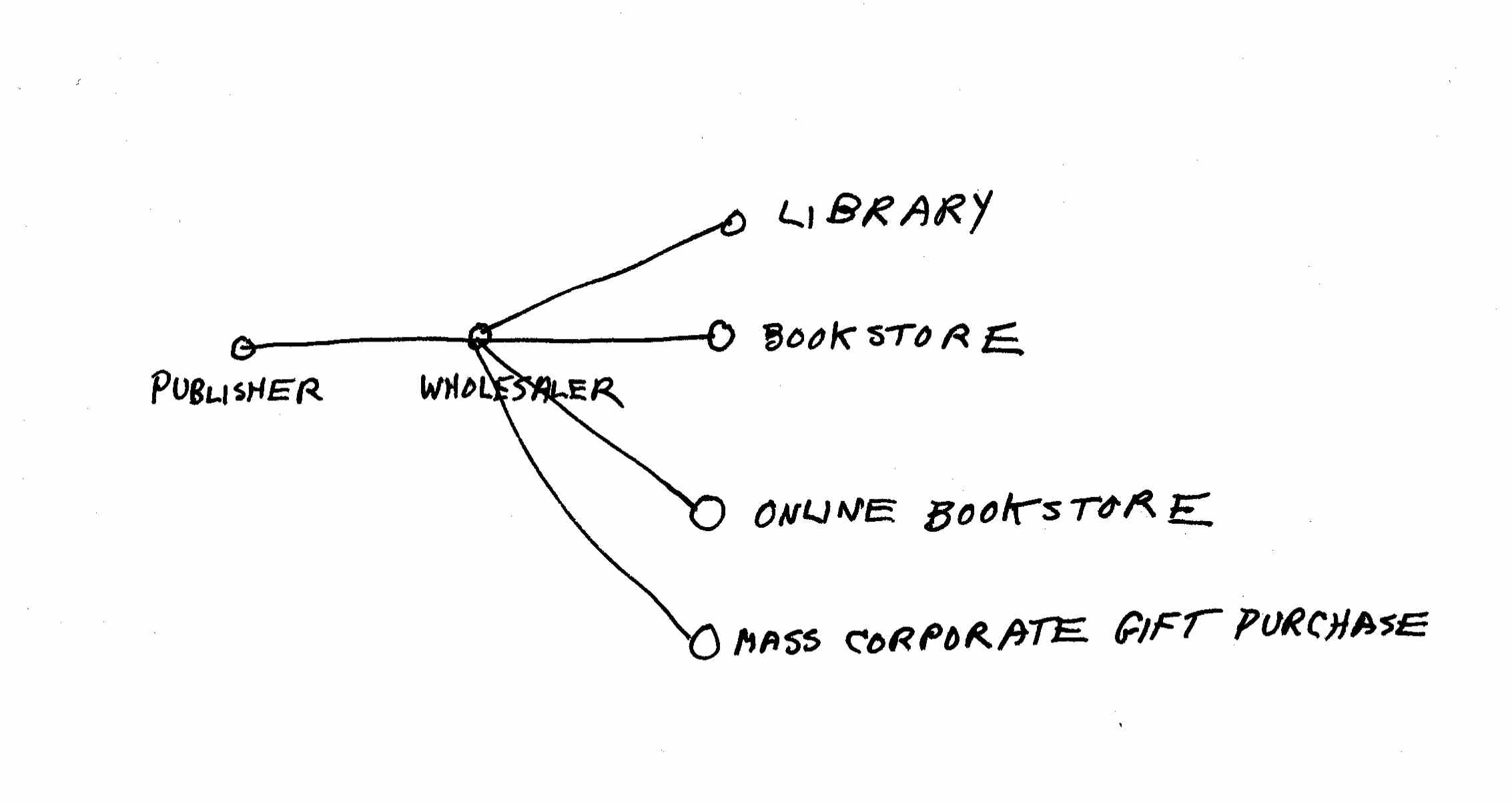|
Continuing Excerpts from my book each Monday:
Chains
One way to start connecting things is by understanding the chain (or chains) that the thing you are studying is a part of. If you own a bookstore, your chain starts with trees and ends up as a book someone is reading in bed. If you are a scientist, your chain goes from subatomic particles through atoms, molecules, cells, organisms, species or communities, planets, solar systems, galaxies, and the universe. Scientists who study the brain are finding it more and more difficult to separate physics, chemistry, biology, and medicine — another chain, with new connecting links being discovered every week. If you are a social scientist, your chain starts in the mind, then goes through the individual to the family or household unit, to the community, the city, the region, the state, the nation, the world. When I am writing this book, I am working on the “word chain” — something that might look like this:
In this chain, each item is part of the next one. Starting at any point on the chain, you ask, “What is this a part of or an example of?” to go up the chain, and you ask, “What are the parts or examples of this?” to go down the chain.
The chain may be a time chain — baby-child-teenager-young person-mature adult-senior citizen. The chain may branch: book goes to both bookstore and to online bookseller and maybe even a big corporation will buy thousands of copies for its employees (hint, hint).
Loose Ends
Often the most interesting questions arise at the two “loose ends” of a chain. In physics, much of our energy goes to the tiny end (nuclear physics) and the big end (cosmology). In economics, the most interesting problems are often at the small end (why did I buy this book from Barnes & Noble instead of Amazon?) and the big end (how can we save the Brazilian rainforests?).
If you go to museums that feature history, the greatest growth of our understanding is at the two ends. That is, if you went to the museum twenty years ago and then go again today, most of the “new stuff” will either be about the last twenty years or it will reflect a better understanding of the distant past — new discoveries about Egypt, Mesopotamia, pre-Columbian America. In human relations, the biggest challenges are often at the husband-wife level and at the Bosnia-UN level.
|












